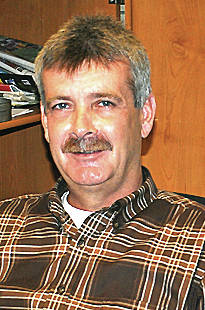
Last week I started a column about the early history of some Highland County settlements. Information for the column came from a book shared by local resident Galen Neal and titled “Highland County Plat Maps – Including Municipal Maps and Historical Notes.” It was put together in 1976 by the Hillsboro Lions Club for the Hillsboro bicentennial celebration.
Last week’s column got a bit long, so following is the story of other settlements in the county, as related in the book:
Marshall was platted in 1817 under the name of West Liberty. A common nickname for the early settlement was Slabtown. The area was well-known for many Underground Railroad stations during the Civil War. It the home of Highland County’s only state champion basketball team.
New Market was the first county seat of Highland County and is its oldest village. Henry Massy explored and surveyed the town in 1797. It was platted and laid out like the city of Philadelphia, Pa. The first jail in Highland County was a dug well where prisoners were incarcerated during the day. At night the prisoners were taken by the police officers to their homes for safe keeping.
New Petersburg was platted in 1817 and by 1830 was a thriving trade center. When the railroad went through Greenfield instead of New Petersburg, the town slowly lost its attraction to traders. The last of the full-blooded Indians in Highland County lived near New Petersburg.
Pricetown was platted in 1847. On the southwest edge of the town is an old Indian fort named Fort Salem. Local legend tells of a child named Lydia Osborne who, in the fall 1802, was lost and wandered along White Oak Creek in the vicinity of the town. A scrap of her dress and place where she was believed to have slept were found, but she was never located.
Rainsboro was platted in 1830 by George Rains, Garrett Copes and David Davis, and is named in honor of the Rains family. Near Rainsboro there once stood a three-story building built in 1805 know as Barrett’s Mills. It was located beside a small creek branch that emptied into Rocky Fork Creek.
Sinking Spring was platted in 1815 by John Wilcoxson even though he had first settled there in 1796, the first settler in Highland County. One of the few octagonal-shaped buildings in the area is located there. It was built as a schoolhouse in 1831 and was used for that purpose until 1844. During the Civil War it was used as headquarters for the Home Guards and guns were hung on wooden pegs on the walls. The building was refurbished as part of a bicentennial project.
Sugartree Ridge was founded in 1844 and was named for the sugar maple tree-covered ridge it was situated on. A road cut through Sugartree Ridge to Winchester was known as Whiskey Road because it had been cut by New Market residents in order to reach the Hemphill distillery to obtain whiskey. State Route 136 now follows that old path.
The present boundaries of Highland County were first a part of Adams County when it was formed on July 10, 1797. Highland County was formed on Feb. 20, 1805. It included the present boundaries plus half of Fayette County and two-thirds of Clinton County. Fayette and Clinton counties were formed in 1810, leaving Highland County with its present boundaries.
Many early Highland County settlers were from the Highlands of Virginia and those people named it Highland as a reminder of their earlier homes. Others have said it was so named since it is the highland divide between the Scioto River and Miami River watersheds.
New Market already had a post office when Highland County was formed so it became the first county seat. The first court was held May 5, 1805. That same year three commissioners were appointed by the state legislature to establish a permanent seat of justice for Highland County. Walter Craig, a surveyor, was appointed to ascertain the lines of the county and establish its center. He was paid 75 cents per day and the commissioners received $2 per day.
Three communities worked to be designated as the center of the county – New Market, Eagle Rock, one mile south of Hillsboro, and a small community three miles north of Hillsboro. A high ridge between them was selected and called Hillsborough.
New Market didn’t give up on the idea of being the county seat. After many arguments, fist fights, drinking and carousing – including parties set up by New Market people to sell their community only to end up with everyone getting drunk and forgetting the purpose of the party – they agreed if New Market was located within four miles of the center of the county, it would become the county seat. After extensive surveying it was determined that New Market was 4.5 miles from the county’s center.
Early courts were wild affairs. They were held in New Market until late in 1807 when it was decided Hillsboro should have the court. Because of the feuds, it was 1813 before formal boundaries of Highland County were established by the state legislature.
Family names in early Highland County history included: Massie, Ross, Hayes, Barrere, Milner, Evans, Richards, Johnson, Head, Kerr, Elliott, Ayres, Trimble, Rogers, Pope, Davidson, Gossett, Smith, Matthews, Franklin, Finley, Medsker and Hart – many names still familiar in the area today.
Reach Jeff Gilliland at 937-402-2522 or [email protected].


